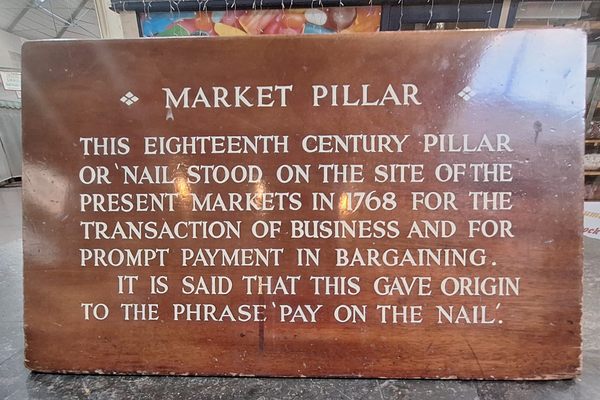About
The expression "pay on the nail" originates from medieval England, specifically from trading in markets. Merchants would conduct transactions on the flat tops of nail-studded counters, ensuring immediate payment by the buyer. Failure to do so meant the goods would be removed. This practice led to the phrase "pay on the nail," signifying instant payment.
Nails played a crucial role in economic transactions throughout English history. Nails also served as a form of currency in some instances, particularly in rural areas where cash was scarce. Additionally, nails were used as security for loans and debts, with borrowers forfeiting nails if they defaulted.
The Nail at Guildhall Market in Bath, dates back to the 15th century. Originally erected as a pillar for public announcements and proclamations, it evolved into a spot for merchants to conduct trade. The Nail served as a central point for commercial activities, with vendors displaying their goods on its base. Transactions conducted at the pillar were considered binding, and immediate payment was expected.
Over the centuries, the Nail became a symbol of Bath's commercial prosperity and civic life. Despite being moved several times, it remains a prominent landmark in Bath's historic Guildhall Market, serving as a reminder of the city's vibrant trading heritage and the importance of public spaces in fostering economic activities and community cohesion.
Related Tags
Know Before You Go
The Nail currently occupies a central spot in the market once you are inside you really can't miss it. There are several entrances to the Market, the pillar is close to the center.
Published
March 29, 2024








































